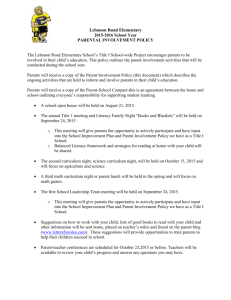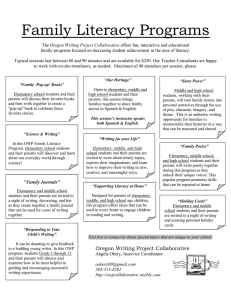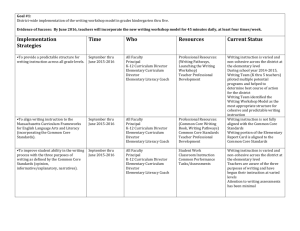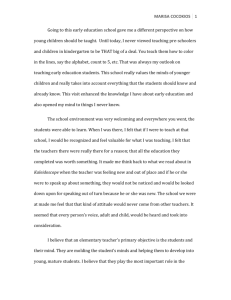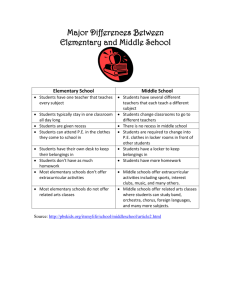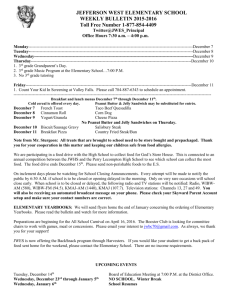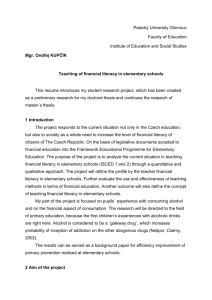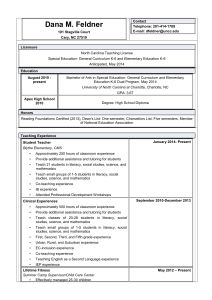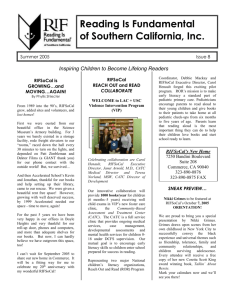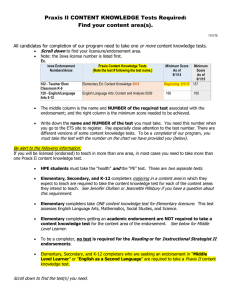jkalvels_LT2_AnnotatedBibliResearchModels
advertisement
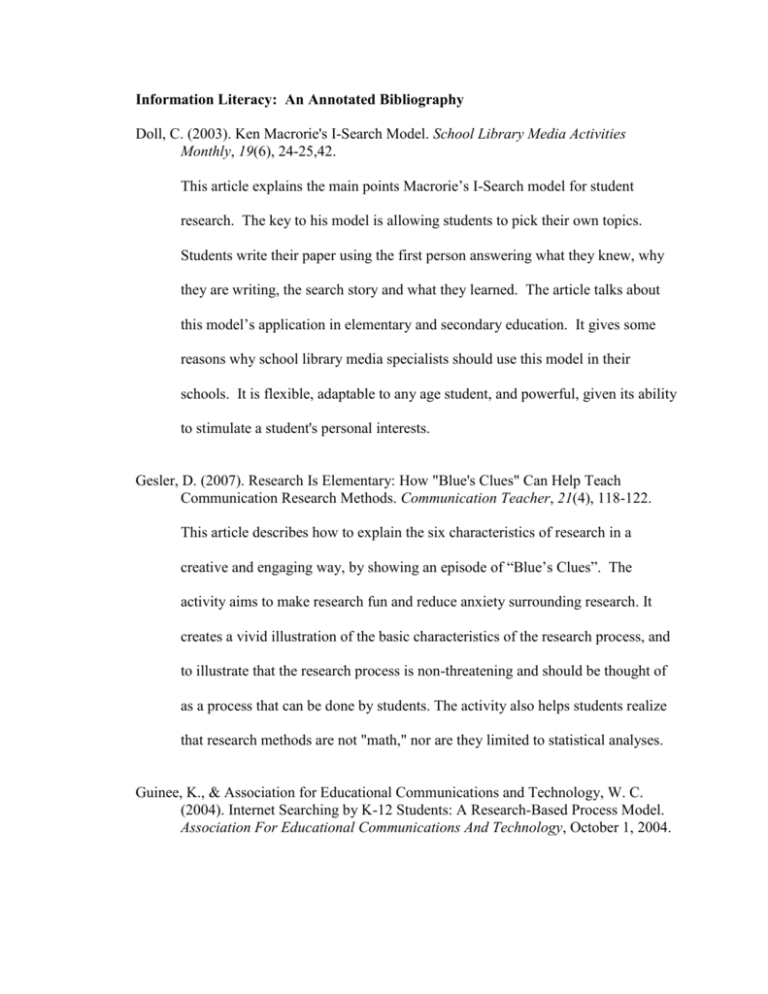
Information Literacy: An Annotated Bibliography Doll, C. (2003). Ken Macrorie's I-Search Model. School Library Media Activities Monthly, 19(6), 24-25,42. This article explains the main points Macrorie’s I-Search model for student research. The key to his model is allowing students to pick their own topics. Students write their paper using the first person answering what they knew, why they are writing, the search story and what they learned. The article talks about this model’s application in elementary and secondary education. It gives some reasons why school library media specialists should use this model in their schools. It is flexible, adaptable to any age student, and powerful, given its ability to stimulate a student's personal interests. Gesler, D. (2007). Research Is Elementary: How "Blue's Clues" Can Help Teach Communication Research Methods. Communication Teacher, 21(4), 118-122. This article describes how to explain the six characteristics of research in a creative and engaging way, by showing an episode of “Blue’s Clues”. The activity aims to make research fun and reduce anxiety surrounding research. It creates a vivid illustration of the basic characteristics of the research process, and to illustrate that the research process is non-threatening and should be thought of as a process that can be done by students. The activity also helps students realize that research methods are not "math," nor are they limited to statistical analyses. Guinee, K., & Association for Educational Communications and Technology, W. C. (2004). Internet Searching by K-12 Students: A Research-Based Process Model. Association For Educational Communications And Technology, October 1, 2004. This article summarizes research studies that have been conducted on how K-12 students research on the Internet. It describes the ways in which students develop research questions, search engines, construct search strings, analyze search results, evaluate sites, identify information, take notes, synthesize information, cite sources, and produce research products. The article also suggests strategies that students can develop to improve the effectiveness and quality of their Webbased research. Harvey II, C. A. (2001). It's Elementary, My Dear Researcher. School Library Media Activities Monthly, 18(4), 25. This article presents tips on how to manage and teach research skills to elementary students. It addresses the problem of a class of students going into the library and all running straight to the Internet station. The select few who made it would spend the entire class time online and the rest waiting for a turn. The article suggests ways to improve student’s research success in the library by dividing the class into groups and having them rotate through stations using different resources such as encyclopedias, reference books, nonfiction books, and the use of the Internet. This new organization of researching caused students to be more focused and gave them the opportunity to use a variety of resources. Landreau, J. (2011). Research: Why Wait Till High School?. Phi Delta Kappan, 92(6), 55-57. This article discusses the benefits of teaching research skills to elementary school students. The author says that research skills can help younger students engage in learning more actively and improve the library and Internet research abilities of the student. She suggests several steps to engage young students in research skills, including allowing students to choose their own research topic, allowing students to decide what to report on, and encouraging students to read their work aloud to each other. Oberg, D. (1999). Teaching the Research Process--For Discovery and Personal Growth. This article explains Alberta’s research model. It helps librarians and teachers provide instructional guidance that is both affective and cognitive in focus. The paper summarizes her Focus on Research model, which is made up of five stages and the skills you need at each stage. The first stage is planning. The skills include: establish topic, identify information sources, identify audience and presentation format, establish evaluation criteria and review process. The second stage is information retrieval. The skills include: locate resources, collect resources and review process. The third stage is information processing. The skills include: choose relevant information, evaluate information, organize and record information, make connections and inferences, create product, revise and edit and review process. The fourth stage is information sharing. The skills include: present findings, demonstrate appropriate audience behavior and review process. The fifth stage is evaluation. The skills include: evaluate product, evaluate research procedures and skills, and review process. Overall themes in teaching the research process are discussed, including: developing emotional literacy; investing time in exploration; supporting students during their work; the teaching role of the librarian; and understanding the process approach. Swartz, E. (2005). And the Answer is.. Teaching Pre K-8, 35(4), 41-42. This article provides tips for teachers in teaching research skills to elementary students. It suggests including specific questions when giving assignments. A structured checklist helps students stay organized, focused and moving forward. The author shares helpful reminders such as: keep questions to be answered within sight at all times, train your students to consider if material collected helps to answer the question, keep track of completed bibliographical information, and help your students organize the gathered data by using envelopes. Yutzey, S. D. (2010). Five Years Later: A Look at Building and Triangulating Evidence in a School Library. Library Media Connection, 29(1), 14-16. This article is about the author answering the question “how your school library impacts students.” This question was posed at an evidence-based practice workshop in 2005. It made the author realize that the traditional statistics she brought along did not address this question. So five year later she is able to answer that question after asking students to reflect on various issues relating to information literacy and research skills. This formative assessment provided powerful information. It revealed patterns of student understanding and confusion. Using the data helps teacher librarians shape and direct what they do as they work with students one-on-one and in groups and how they design and implement their collaborative lessons with teachers.
